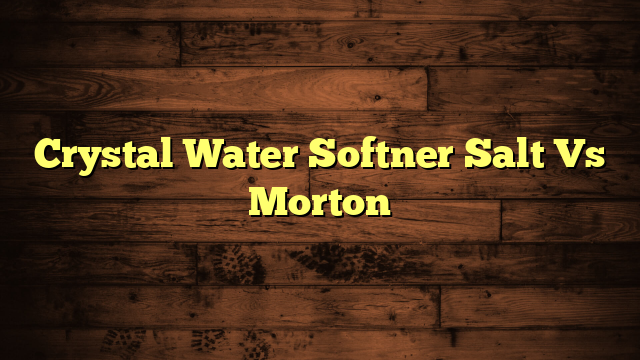How Does a Water Softner System Work?
Have you ever wondered why hard water seems to wreak havoc on your appliances? A water softener system offers a practical solution by employing an ion exchange process. As water passes through, it swaps out troublesome minerals like calcium and magnesium for sodium ions, markedly improving water quality. But what exactly happens inside the system, and how does it impact your daily life? Exploring these aspects can reveal more than just technicalities; it can change the way you think about your water supply.
Key Takeaways
- A water softener uses ion exchange to replace hard water minerals like calcium and magnesium with sodium ions.
- Resin beads in the system capture hard minerals as water passes through, ensuring softer water output.
- The brine tank holds a saltwater solution that replenishes the resin beads, maintaining their effectiveness.
- A control valve regulates water flow, optimizing the softening process and ensuring consistent water quality.
- Regular maintenance, including salt replenishment and cleaning, is essential for the system's optimal performance.
Understanding Hard Water
When you turn on your tap and notice the mineral buildup on your faucets, you're experiencing the effects of hard water. This common issue arises from high levels of calcium and magnesium in your water supply, which can greatly impact your daily life.
Hard water effects can be more than just unsightly; they can lead to problems with your plumbing and appliances, reducing their efficiency and lifespan.
You might find that your soap doesn't lather well, leaving residue on your skin and clothes. This can make laundry less effective, requiring you to use more detergent and water, which ultimately affects your water quality.
Your skin may feel dry, and your hair could lose its shine due to the minerals in hard water.
In addition to personal inconveniences, hard water can cause scale buildup in pipes and appliances, leading to costly repairs.
Understanding these effects is vital for recognizing the importance of water quality in your home. By identifying hard water's impact, you can take steps to improve your water experience, making your home more comfortable and efficient.
What Is a Water Softener?
A water softener is a system designed to tackle the issues caused by hard water, effectively reducing the levels of calcium and magnesium in your water supply. These minerals can lead to various problems, such as scale buildup in pipes and appliances, which can impact their efficiency and lifespan.
By investing in a water softener, you're taking a proactive step toward improving your water quality.
The softening benefits are significant. Soft water can lead to cleaner dishes, brighter laundry, and smoother skin and hair after bathing. It enhances the effectiveness of soaps and detergents, meaning you'll use less while achieving better results.
Furthermore, appliances like dishwashers and water heaters operate more efficiently, saving you money on energy bills and maintenance.
You'll also notice a difference in the feel of your water. Without the harsh minerals, it'll feel softer and more pleasant.
In short, a water softener addresses the challenges posed by hard water, providing you with quality water that positively impacts your everyday life. Understanding what a water softener does is the first step toward enjoying these softening benefits.
Ion Exchange Process
In the ion exchange process, hard water minerals like calcium and magnesium are swapped for softer ions, usually sodium.
You'll find that resin beads play a vital role in this exchange, capturing those unwanted minerals as water flows through your system.
Understanding how these components work together can help you appreciate the efficiency of your water softener.
Hard Water Minerals
Hard water, laden with minerals like calcium and magnesium, can be a nuisance for households. You might notice the hard water effects in your daily life—those pesky soap scum residues, dull laundry, and clogged pipes.
These minerals accumulate over time, leading to mineral buildup on faucets, showerheads, and even inside your appliances, which can greatly shorten their lifespan.
Understanding the role of hard water minerals is essential for grasping how a water softener system works. When water passes through your plumbing, it carries these minerals with it, affecting everything from your skin to your appliances.
The ion exchange process serves as a solution to this problem. It involves swapping out those troublesome calcium and magnesium ions for softer sodium ions, effectively reducing the concentration of hard water minerals in your home.
As a result, you'll notice a marked improvement in water quality and a reduction in mineral buildup. This means cleaner dishes, softer skin, and longer-lasting appliances.
Addressing hard water issues not only enhances your quality of life but also protects your investments in home and health.
Resin Beads Function
Resin beads play an essential role in the ion exchange process, effectively transforming hard water into softer, more manageable water. These tiny plastic spheres come in various resin types, each designed to attract and hold specific ions.
When hard water passes through the tank, the resin beads exchange their sodium ions for the calcium and magnesium ions responsible for water hardness. This exchange is what softens the water, making it easier on your plumbing, appliances, and skin.
Over time, the resin beads become saturated with hard water minerals, which is where bead regeneration comes into play. During this process, a brine solution—high in sodium—is flushed through the resin tank. The sodium ions replace the calcium and magnesium ions on the beads, effectively recharging them for further use.
After regeneration, the beads are ready to soften water again. Regular maintenance of your water softener, including timely regeneration cycles, guarantees that the resin beads function efficiently.
Components of a Water Softener
A typical water softener system consists of several key components that work together to reduce mineral buildup in your water. The primary component types include a resin tank, brine tank, and control valve. Each of these parts plays a vital role in the softening process.
The resin tank houses the resin materials, which are small beads designed to attract and bind with hard minerals like calcium and magnesium. As water flows through the tank, these minerals are exchanged for sodium ions, effectively softening your water.
The brine tank holds a saltwater solution that replenishes the resin beads when they become saturated with minerals.
The control valve regulates the flow of water, ensuring it passes through the resin tank at the right time and rate. This valve is essential for the system's efficiency, as it determines when the regeneration process should occur.
Types of Water Softeners
When it comes to water softeners, you have a couple of main options to evaluate.
The ion exchange process is a popular choice, effectively reducing hardness by replacing minerals with sodium ions.
Alternatively, salt-free systems offer a more eco-friendly approach, using different methods to prevent scale buildup without adding salt to your water.
Ion Exchange Process
Although various water softeners exist, the ion exchange process is the most common method employed to reduce hardness in water. This method involves exchanging hard minerals, like calcium and magnesium, for sodium ions present in a resin bed.
When water flows through this resin, the hard minerals adhere to the resin, and sodium ions are released into the water instead. This exchange effectively softens the water, making it more suitable for household use.
As you might imagine, over time, the resin becomes saturated with hard minerals and can no longer soften water effectively. That's where resin regeneration comes in.
During this process, a concentrated salt solution is flushed through the resin bed, which replaces the hard minerals with sodium ions again. It's essential to perform this regeneration regularly to maintain ideal performance.
Salt-Free Alternatives
Several salt-free alternatives are available for those looking to soften water without the use of sodium. One popular option is a salt-free system that uses a process called template-assisted crystallization. This method transforms hard minerals, like calcium and magnesium, into microscopic crystals that remain suspended in water, preventing them from causing scale buildup.
Another alternative method involves magnetic or electronic descalers. These devices create an electromagnetic field that alters the properties of hard minerals, reducing their ability to adhere to surfaces. While these options may not provide the same level of softening as traditional salt-based systems, they can greatly reduce scale and improve water quality for many households.
It's essential to evaluate your specific needs and water quality when choosing a salt-free system. While these alternatives can be effective, they may not work for everyone.
Be sure to investigate the various options available, read reviews, and consult with professionals to find the solution that best fits your situation. By exploring these salt-free alternatives, you can enjoy softer water without the concerns associated with sodium.
Benefits of Water Softening
Water softening offers a range of benefits that can greatly enhance your home and lifestyle. One major advantage is the cost savings you'll experience. Hard water can lead to scale buildup in your pipes and appliances. Over time, this can cause damage, resulting in costly repairs or replacements. By softening your water, you'll extend the lifespan of your plumbing and appliances, ultimately saving money in the long run.
In addition to financial benefits, water softening improves the taste of your drinking water. Hard water often carries minerals like calcium and magnesium, which can create an unpleasant flavor. When you soften the water, these minerals are removed, resulting in a cleaner, fresher taste. You'll likely notice a difference in your coffee, tea, and even the dishes you prepare.
Moreover, soft water makes cleaning easier. It reduces soap scum buildup and allows detergents to work more effectively, meaning cleaner dishes and laundry without the extra effort.
With all these benefits, investing in a water softener can greatly improve your daily life, providing both tangible and intangible advantages that enhance your overall quality of living.
Maintenance Requirements
Maintaining your water softener is vital for guaranteeing it operates efficiently and effectively. You need to keep track of your maintenance frequency to avoid issues down the line. Typically, you should check your system every few months to verify it's functioning properly.
One of the most important tasks is salt replenishment. Depending on your water usage and hardness levels, you'll need to refill the salt tank regularly—usually every month or so. When you notice the salt level getting low, it's time to top it off.
Using the right type of salt is also essential; opt for high-purity salt to enhance performance. Furthermore, inspect the brine tank for any salt bridges, which can hinder the softening process. If you find one, simply break it up and make sure the salt is free-flowing.
Don't forget to clean your water softener occasionally, as this helps prevent buildup and prolongs the unit's lifespan. By following these maintenance tips, you'll guarantee your water softener remains in top shape, providing you with soft water for your household needs.
Regular attention to these tasks saves you from costly repairs and keeps your system running smoothly.
Common Misconceptions
Many people hold misconceptions about how water softeners work and what they actually do. It's time for some myth debunking! One popular belief is that water softeners eliminate all impurities from water. In reality, they primarily target hard minerals like calcium and magnesium, leaving other contaminants behind. Another misunderstanding is that soft water is unhealthy. While it may contain sodium, the levels are generally low and not harmful for most individuals.
Here's a quick table to clarify these misconceptions:
| Misconception | Reality |
|---|---|
| Water softeners remove all impurities | They mainly focus on hard minerals like calcium and magnesium. |
| Soft water is unhealthy | The sodium levels in soft water are typically low and safe for most people. |
| You don't need to maintain them | Regular maintenance is essential for ideal performance. |
Frequently Asked Questions
Can a Water Softener Remove Existing Scale Buildup?
Yes, a water softener can help with scale removal, but it's more effective at preventing future buildup. For best results, consider regular maintenance tips like cleaning the unit and checking salt levels frequently.
How Long Does a Water Softener Last?
Picture your water softener as a steadfast ally in your home. With proper care, its lifespan can stretch 10-15 years. Regular maintenance tips, like cleaning and salt replenishment, guarantee it stays strong and effective.
Will a Water Softener Affect My Water Pressure?
Yes, a water softener can affect your water pressure. When it regenerates, it may temporarily reduce the flow rate, but once it's done, you'll typically notice improved water pressure and softer water throughout your home.
Is It Safe to Drink Softened Water?
Drinking softened water's like sipping from a invigorating stream. Generally, softened water's safe, but high sodium levels can raise health concerns. If you're watching your sodium intake, consider testing it for softened water safety and health effects.
Can I Install a Water Softener Myself?
Yes, you can install a water softener yourself with DIY installation. Just follow the manufacturer's instructions carefully. Regular softener maintenance will keep it running efficiently, ensuring you enjoy the benefits of softened water for years.
Conclusion
To sum up, understanding how a water softener works can greatly enhance your daily life. By removing hard minerals, you not only improve water quality but also protect your appliances and plumbing. Imagine the surprise when your dishes sparkle without spots or your skin feels softer after a shower. Investing in a water softener is about more than convenience; it's about creating a home where every drop counts. So, embrace the change and enjoy the benefits of softened water!







